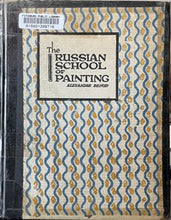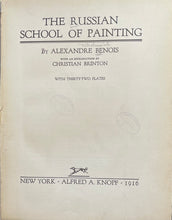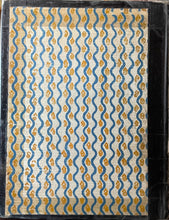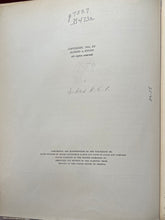
There are three principal characters involved in the publication of this work: Alexandre Benois, Christian Brinton, and Abraham Yarmolinsky. The primary author, Benois, was a well-known Russian artist and critic. Notably, Benois collaborated with Sergei Diaghilev and his Ballet Russes to bring aspects of Russian art and artistry into Western Europe and to promote principles of Art Nouveau and the Aesthetic Movement in Russia. Weathering the upheaval of the Russian Revolution of 1917, he served as the curator for the galleries on the “Old Masters” in the Hermitage for eight years before leaving to settle in Paris. Christian Brinton, the writer of the introduction, was a prominent art critic and collector from Pennsylvania. He appears to have spearheaded the translation and publication of this work from Russian to English. Lastly, Abraham Yarmolinsky serves as translator. He was the longtime head of the Slavic Division of the New York Public Library. Yarmolinsky is known to have translated several works from Russian to English in addition to publishing his own scholarly monographs on Russian history and culture.
The book itself is an overview of Russian art from the time of Peter the Great up to the then present-day on the cusp of the Revolution. Benois approaches art from a wholistic point of view, focusing both on aesthetic qualities as well as broader socio-historical contexts: “In the exposition of the history of Russian art, more than anywhere else, it is important to be guided by these principles of many-sidedness, tolerance, and harmonious proportionality. The study of Russian painting from a purely artistic standpoint would bring us to such unexpected and odd conclusions that accusations of incompleteness and partiality would inevitably follow. [...] On the other hand, the most indulgent historian in his studies of Russian painting must not let slip through his fingers a definite ideal standard, by means of which alone he can clear up the purely artistic significance of each phenomenon. Only when assisted by such an ideal measure will he be able, after giving due credit to the local and temporary significance of a number of artistic productions, to single out and shed light on those phases of Russian artistic life, on which rests the reflection of the eternal and all-human enchantment of beauty.” (from the Forward by the author, xviii-xix)
- Title: The Russian School of Painting
- Author: Alexandre Nikolayevich Benois
- Translator: Abraham (Avrahm) Yarmolinsky
- Publisher: Alfred A. Knopf
- Place: New York
- Year: 1916
- Length: 199pp
- Dimensions: 5” x 11” x 1”
- Condition: The cover for this book is the original painted boards. It is somewhat worn and slightly soiled but is intact. As a library copy, a call number and barcode have been affixed to the spine and front cover. Clear tape protects the spine and the edges of the boards. The binding is coming loose in coming places. No pages are missing, but there is a significantly deep fracture between the first plate and the title page. The pages are generally clean and only slightly tanned with age. There are some small tears and folds along the edges of pages throughout the text. A watermark on the title tape reads “Utopian.” There is minimal marginalia, mostly pencil marks from the cataloguer and light library stamps that appear periodically beginning with the title page and accompanying plate. The 32 plates depicting black-and-white photographs of artworks are in good condition, only slightly faded. A library pocket has been affixed to the front pastedown, and a library card has been pasted to the back endpapers.












